A cold coin placed on the forehead feels heavier than a warm one.
Oddities
“A Singular Coincidence”
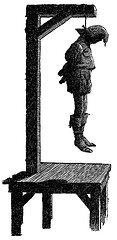
On the 13th of February 1746, as the records of the French criminal jurisprudence inform us, one Jean Marie Dunarry was brought to the scaffold for murdering his father; and, strangely enough, on the 13th of February, 1846, precisely one hundred years later, another Jean Marie Dunbarry, a great-grandson of the first-mentioned criminal, paid the same penalty for the same crime.
— Frank H. Stauffer, The Queer, the Quaint and the Quizzical, 1882
“A Marine Monster”
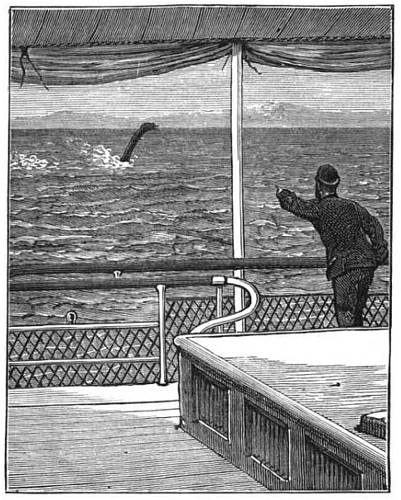
Sea serpent witnessed from the S.S. City of Baltimore in the Gulf of Aden, Jan. 28, 1879. Maj. H.W.I. Senior of the Bengal Staff Corps told the Graphic of “a long black object” “darting rapidly out of the water and splashing in again with a noise distinctly audible.” The creature advanced to within 500 yards:
“The head and neck, about two feet in diameter, rose out of the water to a height of about twenty or thirty feet, and the monster opened its jaws wide as it rose, and closed them again as it lowered its head and darted forward for a dive, reappearing almost immediately some hundred yards ahead. The body was not visible at all, and must have been some depth under water. … When the monster had drawn its head sufficiently out of the water, it let itself drop, as it were, like a huge log of wood, prior to darting forward under the water.'”
Senior’s statement is countersigned by two other witnesses, including the ship’s surgeon.
Moore’s Paradox
This is an absurd statement:
It’s raining, but I don’t believe that it is.
This is not:
It was raining, but I didn’t believe that it was.
Why?
“A Lucky Find”
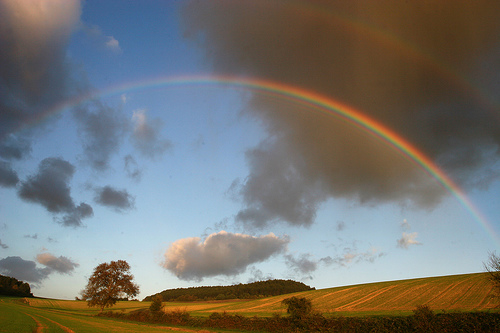
During the month of April, 1733, Sir Simon Stuart, of Hartley, England, while looking over some old writings, found on the back of one of them a memorandum noting that 1500 broad pieces were buried in a certain spot in an adjoining field. After a little digging the treasure was found in a pot, hidden there in the time of the civil wars by his grandfather, Sir Nicholas Stuart.
— Frank H. Stauffer, The Queer, the Quaint and the Quizzical, 1882
“The Day the Clowns Cried”
On July 6, 1944, the Ringling Brothers big top caught fire during a performance in Hartford, Conn., and more than 160 people were killed in the ensuing blaze.
Among the victims was a young blond girl in a brown dress, whose body was assigned number 1565 by the morgue. A photograph was circulated locally and then throughout the United States, but no one came forward to claim her.
To this day no one knows who “Little Miss 1565” was or how she came to be at the circus that day.
05/23/2013 UPDATE: Connecticut investigator Rick Davey has identified the girl as 8-year-old Eleanor Cook, who had attended the circus with her mother, Mildred. Eleanor received only minor burns in the fire but was trampled by the crowd, and efforts to identify her were unsuccessful. Mildred confirmed her identity to Davey.
(Thanks, Patricia.)
Lex Talionis
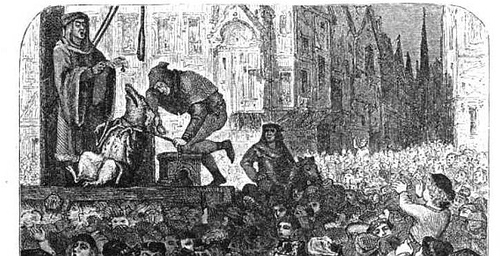
In 1386, the tribunal of Falaise sentenced a sow to be mangled and maimed in the head and forelegs, and then to be hanged, for having torn the face and arms of a child and thus caused its death. … As if to make the travesty of justice complete, the sow was dressed in man’s clothes and executed on the public square near the city-hall at an expense to the state of ten sous and ten deniers, besides a pair of gloves to the hangman.
— E.P. Evans, The Criminal Prosecution and Capital Punishment of Animals, 1906
A Polyhedral Mystery
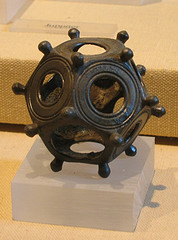
What is this? Well, it’s a dodecahedron, but what was its purpose? More than 100 of these objects have been found between England and Hungary; this one was discovered among Roman ruins near Frankfurt. Typically they’re made of bronze or stone, with a hollow center and a round hole in the middle of each face, and they range in size from 4 to 11 centimeters.
The Romans likely made them in the second or third century, but strangely they appear in no pictures from that period and they’re not mentioned in Roman literature.
Best guesses so far: survey instruments, candlesticks, or dice.
See Other Sign
Pity the sign makers in this Welsh village:
![]()
That’s the longest place name in the United Kingdom. It’s Welsh for “St. Mary’s church in the hollow of the white hazel near to the rapid whirlpool and the church of St. Tysilio of the red cave.”
That doesn’t take the prize, though. The longest place name in an English-speaking country belongs to a hill on New Zealand’s North Island:

It means “the summit where Tamatea, the man with the big knees, the climber of mountains, the land-swallower who traveled about, played his flute to his loved one.”
Forward in Reverse
Excerpt from the St. James, Mo., Leader, June 4, 1931:
Plennie L. Wingo, a man walking around the world backwards, stopped in St. James long enough to get some new toe taps for his shoes. This was the 4th pair he had wore out. He started from Fort Worth, Texas, April 15th, and has been walking ever since. He wears periscopic eyeglasses, fastened over his ears like regular spectacles, which enables him to see where he is walking. He will continue on 66 to St. Louis then on Highway 40 to New York where he will secure passage to Europe. Wingo expects to complete the trip in about four years. He depends entirely on the sale of postcards for his expenses. He averages about 20 miles per day.
Wingo had covered 8,000 miles by October 1932, when Istanbul authorities denied him a visa and he gave up and went home.
His wife had divorced him in absentia.
